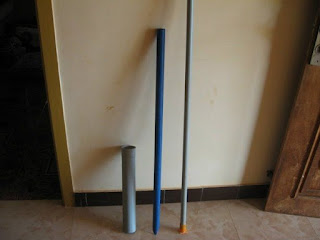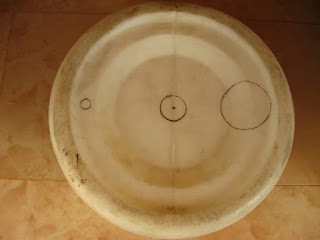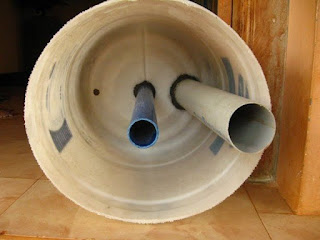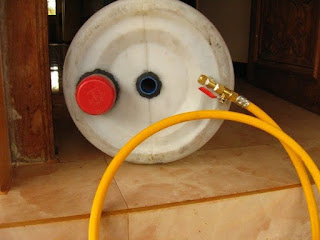Landfill Leachate Treatment
Landfill leachate is generated from liquids existing in the waste as it enters a landfill or from rainwater that passes through the waste within the facility. The leachate consists of different organic and inorganic compounds that may be either dissolved or suspended. An important part of maintaining a landfill is managing the leachate through proper treatment methods designed to prevent pollution into surrounding ground and surface waters
The physical appearance of leachate when it emerges from a typical landfill site is a strongly odoured black, yellow or orange coloured cloudy liquid. The smell is acidic and offensive and may be very pervasive because of hydrogen, nitrogen and sulfur rich organic species such asmercaptans.
If leachates have a distinguishing characteristic, it is that they are variable. Flows change based on the weather – increasing during rainy periods, decreasing during dry and waste concentrations can change dramatically over the life of the landfill. As a result, no landfill leachate is constant over time, and no two leachates are the same.
When the landfill is a few years old the dominated fermentation phase is acidogenic and the leachate generated is generally referred as “young”.In that case, COD and BOD reaches very high concentrations. The ratio of BOD/COD is higherthan 0.7 and pH is low due to the high concentrations VFAs. Landfill grater than 10 years old aregenerally in the methanogenic phase and theleachate generated is referred to as “old”. Duringthe methanogenic phase, bacterias are degradingthe VF-acids and reduce the organic strength ofleachate, leading to the pH value higher than 7.In “old” leachate BOD decreases faster than CODand the radio BOD/COD is stabilized on the levelless than 0.2 [2,4].Anaerobic treatmentprocess is used mainly for young landfill leachate,which BOD5 and BOD5/COD ratio is very high[2]. However, Kettunen, et al. [10] performedthe treatment with UASB reactor were municipal landfill leachate was having COD higher than800 mg × dm−3 and the BOD/COD radio washigher than 0.3.Anaerobic processes of landfill leachate inUASB reactor allow complete removal of CODfrom 65 to 76% and BOD5 removal beyond90% [11].
Table 1
Characteristics of landfill leachate
Parameter Value
COD, mg O2 × dm−3 3500–4200
BOD5, mg O2 × dm−3 380–420
pH 8.2–8.4
Alkalinity mg CaCO3 × dm−3 4900–5200
Chloride mg Cl−× dm−3 1800–2500
Ammonia nitrogen, mg NH4+× dm−3890–994
VFA, mg CH3COOH × dm−3 500–900
landfill leachate quantity , 5%
UNITS OF TREATMENT OF LANDFILL LEACHATE:
1. Collection Sump: Areas in which rainfall is higher than average typically have larger sumps. A further criterion for sump planning is accounting for the pump capacity. The relationship of pump capacity and sump size is inversed. If the pump capacity is low, the volume of the sump should be larger than average. It is critical for the volume of the sump to be able to store the expected leachate between pumping cycles. This relationship helps maintain a healthy operation. Sump pumps can function with preset phase times. If the flow is not predictable, a predetermined leachate height level can automatically switch the system on. Other conditions for sump planning are maintenance and pump drawdown. Collection pipes typically convey the leachate by gravity to one or more sumps, depending upon the size of the area drained. Leachate collected in the sump is removed by pumping.
2. UASB Reactor:
3. Clarifier Tank :
4. Clear Water Tank:
5. Activated Carbon Filter:
LITERATURE STUDY: WASTE TO ENERGY CONCEPTS
Energy recovery as electric power is a feature of all waste-to-energy systems.
Evaluation of the applicability of the technologies of biomethanation, gasification/pyrolysis,incineration and landfilling as Waste-to-Energy options, and their comparison against composting as a competing technology for waste disposal, has shown the following:
• Biomethanation has emerged as a favoured technology for various urban and industrial waste.
• Gasification/pyrolysis have a distinct promise, and although there are limitations to its uptake, these can be overcome as the technology matures.
• Incineration is a mature technology for energy recovery from urban and industrial wastes and has been sucessfully commercialized in the developed countries. The recent focus has been on environmental compliance due to which it will become an expensive option.
• The present trend is in favour of material recovery facilities and a shift away from landfills for MSW disposal in developed countries.
• Compositing is not a WTE option and does not come out as worthwhile waste treatment process.
• Technologies like landfill with gas recovery and composting can become viable options for certain locations in India, as a short to medium term option.
Landfill Leachate Treatment Technologies
Landfill leachate may be characterized as a water-based solution of four groups of contaminants ; dissolved organic matter (alcohols, acids, aldehydes, short chain sugars etc.), inorganic macro components (common cations and anions including sulfate, chloride, Iron, aluminium, zinc and ammonia), heavy metals (Pb, Ni, Cu, Hg) , and xenobiotic organic compounds such as halogenatedorganics, (PCBs, dioxins, etc.).[4]
Leachate treatment technologies fall into two basic types, biological and physical/chemical. In larger systems and depending on the treatment goals, integrated systems which combine the two are often used.
The typical processes used for pretreatment include equalization, aeration, pH adjustment and metals removal.
The most common biological treatment is activated sludge - a suspended-growth process that uses aerobic microorganisms to biodegrade organic contaminants in leachate. With conventional activated-sludge treatment, the leachate is aerated in an open tank with diffusers or mechanical aerators. After the aeration phase, the mixed liquor of microorganisms and leachate is pumped to a gravity clarifier.
The rotating biological contactor (RBC) is an attached-growth, aerobic, biological treatment process in which a series of discs are partially submerged in a tank of leachate. The disks eventually develop a slime layer, then rotational shear forces strip off the excess solids and carry them with the effluent to a clarifier, where they are settled and separated from the treated waste.
The carbon technique removes dissolved organics from the leachate. Although carbon systems may be useful with some older leachates, the cost of the carbon in the regeneration stage can make the process one of the most expensive treatment options.
Advanced Treatment The new landfill regulations have made some treatment systems obsolete. Many landfill operators are now choosing new systems that produce a cleaner effluent and can reduce capital and operating expenses. Such systems include:
* Recirculation and Injection. Direct recirculation distributes the leachate onto the landfill in a semi-closed loop process. While promising, this system has limitations of recirculating 100 percent of the leachate without literally soaking the landfill.
* Membrane Solution. Membrane technology can be adapted to many steps of purification and keep clean-up standards at a high level. Membranes can remove contaminants without extensive biological infrastructure or toxic chemicals.
* Reverse Osmosis (RO). Prior to 1988, reverse osmosis wasn't able to treat leachate successfully due to the core membrane design of spiral-wound modules, which were state-of-the-art at that time. While this method produced efficient results, it also promoted bio-fouling and premature clogging.
Disc Tube technology, developed by the Rochem Group, has been installed in more than 35 European landfills to treat feed waters that would foul conventional RO configurations. After the contaminated water is fed into the tubular chamber, its flow is controlled as it passes through a system of discs and over flat membrane cushions, removing clean water and concentrating the waste material. The turbulent flow reduces the membranes' tendency to scale or foul and requires cleaning less frequently.
The system removes heavy metals, suspended solids, ammonia and hazardous non-degradable organics including pesticides and herbicides without extensive pre-treatment systems. The pure water is clean enough for direct discharge into the environment and accounts for 75 to 92 percent of the leachate. The remaining concentrate can then be recycled to the landfill or further processed.
Siemens Water Technologies' PACT® systems combine biological treatment (activated sludge) with adsorption (powdered activated carbon) so that physical and biological treatment occur simultaneously. The system removes biodegradable and non-biodegradable pollutants in a single process
The most cost effective form of treatment for high levels of BOD, COD and ammonia is intense biological oxidation, and in the UK the sequential batch reactor is the most common technology used. The sequence batch reactor (SBR) is a form of activated sludge treatment.
Granular activated carbon, in combination with biological pretreatment, is a proven and economical technology which is effective in reducing Chemical Oxygen Demand (COD), Adsorbable Organic Halogens (AOX), pesticides, solvents, organic compounds and other toxic substances to the strictest legal National and EC norms. The chemical composition and content of landfill leachate can vary greatly between landfill sites. The age of the landfill, type of waste and treatment processes already in operation are the parameters to be considered.
COD levels can range from 200mg/l to 2000mg/l. Carbon consumption is normally dependent upon the COD adsorption rather than the AOX. Therefore COD will be the determining factor in estimating carbon consumption.
However, an aerobic system must be used after the UASB reactor for the effluent to meet the standards defined for the proposed disposal method.
Combined treatment of leachate from sanitary landfill and municipal wastewater by UASB reactors
This study showed the potential of anaerobic treatment in an UASB reactor treating a combination of domestic wastewater and leachate in a 5% volumetric ratio of leachate. Under these conditions the reactor assimilated properly the leachate fraction incorporated. With a HRT of 8 h and a mean volumetric organic load of 2.84 kg m(-3) d(-1) COD removal efficiencies around 70% were obtained,
When installing a leachate treatment system, choose a plan that will provide the maximum amount of long-term flexibility to assure compliance with future regulations and discharge standards.
LEACHATE RECYCLE CONCEPT :The major objective of gas studies is directed towards maximizing production rates of gas by biodegradation of the waste while simultaneously reducing the period of time that gas is evolved by recycling leachate. It describes potential means of managing both leachate quality and quantity by leachate recirculation to aid in decomposition of the waste while also treating the organic material in the leachate and reducing the quantity of leachate that must be treated and hauled away from the site.















